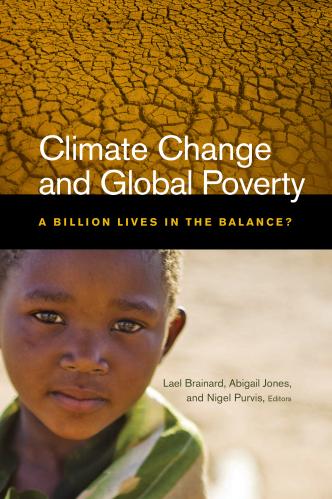What’s the latest thinking in fiscal and monetary policy? The Hutchins Roundup keeps you informed of the latest research, charts, and speeches. Want to receive the Hutchins Roundup as an email? Sign up here to get it in your inbox every Thursday.
The growth indicators of ride-sharing services has biased measures of inflation
The arrival of new industry participants creates challenges for inflation measurement. The Bureau of Labor Statistics treats commodities sold by different merchants as distinct goods, but to the extent they are close substitutes, treating them this way can lead to an upward bias in inflation. Ana Aizcorbe from the Bureau of Economic Analysis and Jeff Chen from the University of Cambridge use highly detailed data from email receipts to assess this “outlet substitution bias” in the market for ride-sharing and taxi service in New York City. They find that the arrival and growth of ride-sharing services in New York City likely imparted at least a 0.5 percentage point per year bias in official price indexes between 2015 to 2017. They attribute the magnitude of the bias to the sustained growth of ride-sharing over this period, from 40% of the market in 2015 to 70 percent by 2017, and to the fact that ride-shares cost less than taxis. The authors note there have not been many other empirical studies to inform estimates of outlet substitution bias due to the paucity of the highly granular merchant-level data required.
Telework jobs are more attractive to employees
Employees are willing to forgo wages for jobs with telework potential, find Eline Moens and co-authors from Ghent University. The authors surveyed a representative sample of 500 Belgian employees to evaluate their willingness to accept a range of hypothetical job offers with different characteristics. They find that a 10% increase in the possibility of telework corresponds to a 2.2% rise in the attractiveness of the job offer, equivalent to a willingness to accept 2.3% less in compensation. They also find that employees respond negatively to higher commute times, with a 10-minute increase in commute time corresponding to a 2.4% decline in job attractiveness. The authors explain that job offers with higher telework potential are associated with higher expectations of the job’s work-life balance, autonomy in scheduling, job satisfaction, and productivity. However, they also find that jobs with a higher potential for telework decrease job-seekers’ expectations of their relationship quality with co-workers and are more popular among less conscientious employees (as evaluated by a personality assessment).
Student loan borrowing has little effect on retirement preparedness
As higher education costs rise, the rate and level of student loan borrowing has also risen. But has this affected the financial well-being and retirement preparedness of families borrowing student loans? No, say Lisa Dettling, Sarena Goodman, and Sarah Reber of the Federal Reserve Board. The authors compare the finances of college-educated families who did not take out student loans with those who did, and find that their earnings, savings, and wealth trajectories are broadly similar in their late-career ages. Furthermore, these groups are, on average, substantially wealthier than families without a college education. The exception is the small subset of college-educated families who carry loan balances into late adulthood (most families pay off their loans by their 30s or 40s): these families have lower savings and wealth accumulation than their peers. Thus, policies that seek to improve retirement preparedness by reducing student loan balances or otherwise focusing on student borrowers are likely to have a regressive effect unless they are targeted specifically at this small subset of households, they conclude.
Chart of the Week: Mortgage rates continue to rise
Chart courtesy of FreddieMac
Quote of the week:
“It is of paramount importance to get inflation down. Accordingly, the Committee will continue tightening monetary policy methodically through a series of interest rate increases and by starting to reduce the balance sheet at a rapid pace as soon as our May meeting. Given that the recovery has been considerably stronger and faster than in the previous cycle, I expect the balance sheet to shrink considerably more rapidly than in the previous recovery, with significantly larger caps and a much shorter period to phase in the maximum caps compared with 2017–19. The reduction in the balance sheet will contribute to monetary policy tightening over and above the expected increases in the policy rate reflected in market pricing and the Committee’s Summary of Economic Projections. I expect the combined effect of rate increases and balance sheet reduction to bring the stance of policy to a more neutral position later this year, with the full extent of additional tightening over time dependent on how the outlook for inflation and employment evolves,” says Federal Reserve Board Governor Lael Brainard.
“Looking forward, at every meeting, we will have the opportunity to calibrate the appropriate pace of firming through the policy rate to reflect what the incoming data tell us about the outlook and the balance of risks. For today, every indicator of longer-term inflation expectations lies within the range of historical values consistent with our 2% target. On the other side, I am attentive to signals from the yield curve at different horizons and from other data that might suggest increased downside risks to activity. Currently, inflation is much too high and is subject to upside risks. The Committee is prepared to take stronger action if indicators of inflation and inflation expectations indicate that such action is warranted. We are committed to bringing inflation back down to its 2% target, recognizing that stable low inflation is vital to maintaining a strong economy and a labor market that works for everyone.”
The Brookings Institution is financed through the support of a diverse array of foundations, corporations, governments, individuals, as well as an endowment. A list of donors can be found in our annual reports published online here. The findings, interpretations, and conclusions in this report are solely those of its author(s) and are not influenced by any donation.
The Brookings Institution is committed to quality, independence, and impact.
We are supported by a diverse array of funders. In line with our values and policies, each Brookings publication represents the sole views of its author(s).












Commentary
Hutchins Roundup: Inflation, telework, and more
April 7, 2022